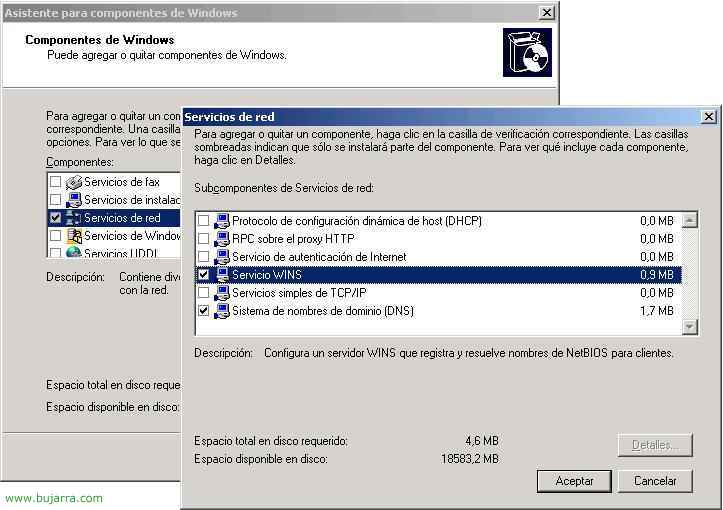Configuring ABE – Access based Enumeration on Windows 2003
Microsoft Windows 2003 brings a new utility called Access based Enumeration that allows you to hide directories that users don't have NTFS permissions to, instead of seeing them as usual, it hides them directly, avoiding user confusion. To be able to use Access-based Enumeration with Windows 2003 we have to download the installer from Microsoft's website.

We enter the www.microsoft.com website and download “Windows Server 2003 Access-based Enumeration”. We run it to begin the installation, this must be installed on the servers, not on customers, but on the server that is a file server.

Click on “Next” To start the wizard,
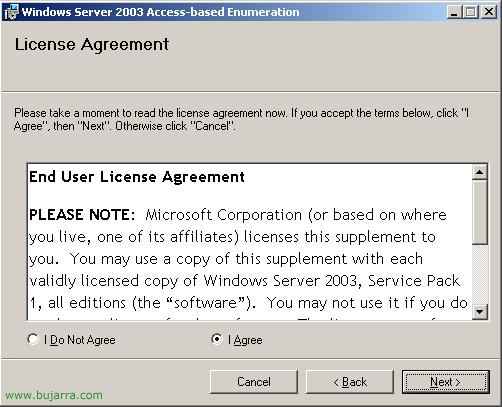
We accept the license agreement, by clicking on “I Agree” & “Next”,

Select where we want to install it, The Installation Path, will hardly take up space, Continue “Next”,

If we want this to be enabled by default in all the directories that we have shared on this server, we check the first option “Enable Access-based Enumeration on all existind shared folders” and if we want to do it manually and independently in those that interest us, Mark “I will enable Access-based Enumeration on individual shared folders”, and we continue “Next”,

“Next” to begin installation,

… wait a few seconds while it installs…
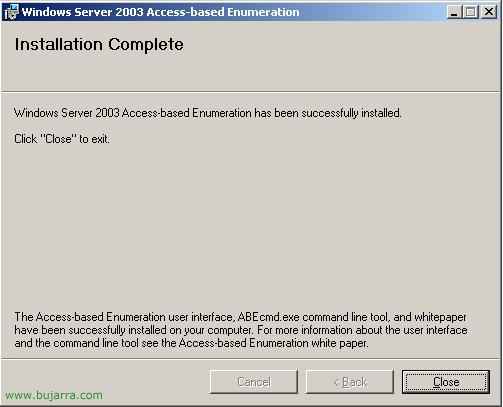
“Close”, perfect, has already been installed.

Now we have to go to the properties of the folders that we have shared and we will see that we have a new tab in them called “Access-based Enumeration”, We have to check the “Enable access-based enumeration on this shared folder” and accept.
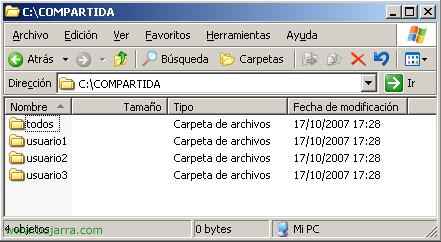
This would be the example of a folder that we have shared by entering locally as an administrator, It is an example to see which directories it has. Of course, NTFS permissions are configured in each directory, which can only be entered by the user in each directory.

If we log in with a user who has access only to the directory “user1” and “all” Here's what you'll see online,
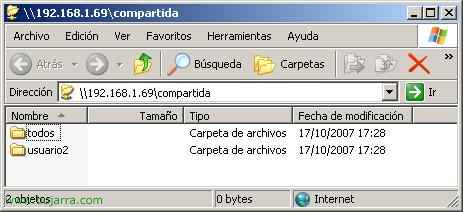
And logically if we log in with a user who only has access to the directory “user2” and “all” Here's what you'll see. It's a way to prevent users from seeing directories that they don't have access to.
www.bujarra.com – Héctor Herrero – Nh*****@*****ra.com – v 1.0
Recommended Posts
Post does not have featured image
Post does not have featured image


